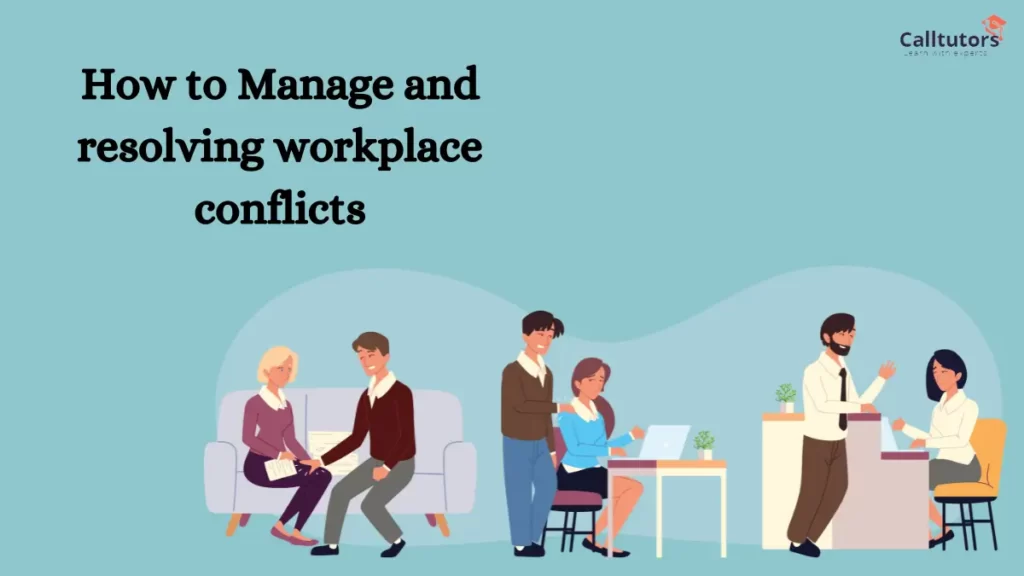Conflict is an inevitable aspect of human interaction, and it often arises in the workplace due to differences in perspectives, goals, and work styles. However, workplace conflicts can escalate when left unaddressed, leading to decreased productivity, increased stress levels, and a toxic work environment. In this article, we will explore practical strategies for managing and resolving conflict in the workplace.
Understanding Conflict and Its Impacts
Table of Contents
Conflict, in the context of the workplace, refers to disagreements or clashes between individuals or groups that may arise from various factors, such as conflicting interests, communication breakdowns, or competing priorities. When left unresolved, conflict can have significant negative impacts on both individuals and the organization as a whole. It can result in decreased morale, strained relationships, increased absenteeism, and reduced overall productivity.
Conflict Management Training
One effective way to address and prevent workplace conflicts is through conflict management training. This type of training equips employees with the necessary skills to identify, understand, and resolve conflicts in a constructive manner. Conflict management training provides individuals with tools and techniques for effective communication, active listening, negotiation, and problem-solving. It promotes a culture of open dialogue, respect, and collaboration, which can help prevent conflicts from escalating and foster a harmonious work environment.
Encouraging Collaboration and Team Building
Promoting collaboration and team-building activities can significantly contribute to conflict management and resolution. When employees work together on common goals, they develop stronger relationships, trust, and mutual respect, which can help prevent conflicts from arising or escalating. Organizations can organize team-building exercises, workshops, or collaborative projects encouraging employees to work closely with their colleagues, fostering better understanding and communication.
Building a sense of shared purpose creates a supportive environment where conflicts can be addressed more constructively. Additionally, promoting a positive and inclusive work culture that values teamwork can help reduce unhealthy competition and promote a collaborative mindset among employees.
Workplace Conflict Resolution Services for Employees
In addition to conflict management training, organizations can also provide workplace conflict resolution services for employees. These services are designed to support individuals involved in conflicts by providing them with a safe and confidential space to express their concerns and explore potential solutions.
Workplace conflict resolution services may involve mediation, where a neutral third party facilitates constructive dialogue between conflicting parties. This process encourages empathy, understanding, and the development of mutually beneficial resolutions, thereby promoting a healthy work environment.
Open and Transparent Communication
Effective communication is a crucial component in managing and resolving workplace conflicts. Encouraging open and transparent communication channels can help prevent conflicts from escalating and enable early intervention. Organizations should foster a culture where employees feel comfortable expressing their opinions and concerns without fear of retribution.
Regular team meetings, one-on-one check-ins, and feedback sessions can create opportunities for discussions, clarification, and the identification of potential conflicts before they become unmanageable.
Estimating Time and Setting Realistic Expectations
One common source of conflict in the workplace is related to the estimation of time required to complete tasks or projects. Miscommunication or unrealistic expectations regarding deadlines can lead to frustration, stress, and conflicts among team members. To mitigate this issue, it is essential to establish clear and realistic expectations from the outset and start estimating time.
Collaboratively setting deadlines, breaking down tasks into manageable subtasks, and considering individual workloads and skill sets can contribute to a more accurate estimation of time. Regular check-ins and ongoing communication regarding progress can also help address any potential conflicts arising from time-related
Embracing Diversity and Inclusion
Recognizing and embracing diversity and inclusion is an important aspect of managing and resolving workplace conflicts. A diverse workforce brings together individuals with different backgrounds, perspectives, and experiences, which can lead to varying opinions and approaches to work. While diversity is a strength, it can also be a source of conflict if not managed effectively.
Organizations can foster inclusivity by promoting a culture of respect, empathy, and appreciation for diverse viewpoints. By valuing and leveraging each team member’s unique strengths and perspectives, organizations can create an environment where conflicts are approached with an open mind and a willingness to understand different perspectives, ultimately leading to more innovative solutions and stronger teamwork.
Establishing Clear Policies and Procedures
Clear policies and procedures are essential in managing workplace conflicts. Organizations should have well-defined guidelines in place to address conflicts and ensure fairness and consistency in their resolution. These policies should outline the steps to be taken when conflicts arise, including reporting mechanisms, investigation processes, and disciplinary measures if necessary.
Organizations can minimize ambiguity and promote a sense of security among employees by providing a framework for addressing conflicts. Moreover, clear policies and procedures help establish trust and confidence in the organization’s commitment to resolving conflicts fairly and unbiasedly.
Final Thoughts: resolving workplace conflicts
Conflict is a natural part of any workplace environment, but it doesn’t have to be detrimental. By implementing effective strategies for managing and resolving conflicts, organizations can transform conflicts into opportunities for growth, increased understanding, and improved teamwork.
Conflict management training, workplace conflict resolution services, open communication, and realistic expectation setting are all key elements in creating a positive and productive work environment. By embracing these strategies, organizations can create a harmonious workplace where conflicts are addressed constructively and employees can thrive.
Also Read 10 Best Idea For Programming Project — You Can Try For Good Practice



